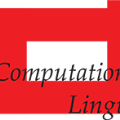Collaborative problem-solving (CPS) is a vital skill used both in the workplace and in educational environments. CPS is useful in tackling increasingly complex global, economic, and political issues and is considered a central 21st century skill. The increasingly connected global community presents a fruitful opportunity for creative and collaborative problem-solving interactions and solutions that involve diverse perspectives. Unfortunately, women and underrepresented minorities (URMs) often face obstacles during collaborative interactions that hinder their key participation in these problem-solving conversations. Here, we explored the communication patterns of minority and non-minority individuals working together in a CPS task. Group Communication Analysis (GCA), a temporally-sensitive computational linguistic tool, was used to examine how URM status impacts individuals' sociocognitive linguistic patterns. Results show differences across racial/ethnic groups in key sociocognitive features that indicate fruitful collaborative interactions. We also investigated how the groups' racial/ethnic composition impacts both individual and group communication patterns. In general, individuals in more demographically diverse groups displayed more productive communication behaviors than individuals who were in majority-dominated groups. We discuss the implications of individual and group diversity on communication patterns that emerge during CPS and how these patterns can impact collaborative outcomes.
翻译:暂无翻译




